‘Black film properties may be to the 90s what the carphone was to the 80s; every studio executive has to have one,” wrote the New York Times magazine in the summer of 1991. It’s a comment that speaks volumes about both a cultural moment and its transience. The piece was titled They’ve Gotta Have Us, referring to Spike Lee’s 1986 breakthrough movie She’s Gotta Have It. The group portrait on the cover brought together an impressive collection of young, black film-makers – what has been labelled “the class of 91”. Lee was head boy, of course. By that time he was well into a creative blaze that would continue at the rate of practically a film a year: Do the Right Thing (1989), Mo’ Better Blues (1990), Jungle Fever (1991), Malcolm X (1992), Crooklyn (1994), Clockers (1995).
There was also Lee’s friend Ernest Dickerson, the cinematographer who made Do the Right Thing sizzle, and who was now directing his own Harlem hood tale, Juice. There was Mario Van Peebles, maker of first-rate gangster thriller New Jack City. There were the Hudlin brothers, Warrington and Reginald, makers of hit teen comedy House Party. There were Charles Lane and 20-year-old Matty Rich, whose debut movies had won prizes at Cannes and Sundance, respectively.
And the breakout star of the moment was John Singleton, whose autobiographical Los Angeles drama Boyz N the Hood had earned him a three-year studio deal, and would make him the first African-American, and the youngest-ever best director Oscar nominee. “The current crop is breaking new ground in their subject matter and their politics,” the article observed. “For the studios, these are tales from a new world, presented with an often harrowing, if occasionally hyperbolic, realism.” The film-makers themselves seemed sensibly cautious of being lumped into a moment. “If one black film-maker messes up,” said Lee, “the rest of us will be made to feel it.”
The caution was justified. Fast forward 25 years or so, and we’re faced with a situation where, for the second year running, not a single actor of colour received an Oscar nomination; where African-Americans are still complaining of under-representation within film and television – when they’re not taking to the streets to remind the country that their lives matter. Did someone mess up?
One thing is for sure: looking back, the 90s was a golden age. The amount of black cinema breaking through at that time is astonishing. Hip-hop, and white audiences’ interest in it, fed into the movement. Rappers and musicians seamlessly transitioned into film: Ice Cube, Ice-T, Tupac Shakur, Queen Latifah. It wasn’t just youthful “hood dramas”, however; there was quality work across the spectrum. Serious thrillers such as Devil in a Blue Dress and Deep Cover, appeared alongside arthouse-friendly fare from the “LA Rebellion” group. This film-schooled movement generated influential works such as Charles Burnett’s To Sleep With Anger and Julie Dash’s Daughters of the Dust, released in 1991, the first feature directed by an African-American woman to get theatrical distribution across the US.

On television, too, African-American content seemed to be crossing over. Will Smith figuratively sauntered into Hollywood in The Fresh Prince of Bel Air, while Jamie Foxx cut his teeth on the Wayans brothers’ sketch show, In Living Color. If you bothered to flick over from Friends or Seinfeld, you could find black-led series such as Moesha, A Different World, Family Matters, Kenan and Kel, Martin (as in Lawrence), Queen Latifah’s Living Single, Sister Sister and Malcolm & Eddie.
For the first time, mainstream cinema and TV audiences were getting honest, intelligent portrayals of both modern African-American life and US history from a black perspective – the type of stories only black film-makers could tell. The revolution was being televised, dramatised, publicised and eulogised.
It is worth remembering that it was only three years earlier, in 1987, that Robert Townsend had made the cult satire Hollywood Shuffle, which detailed the futile struggle of an aspiring black actor, and feels as if it is from a completely different era. “The only role they gonna let us do is a slave, a butler or some street hood,” a fellow auditionee tells Townsend’s character. White producers say they’re looking for an “Eddie Murphy type”, and ask him to “be more black”. In his daydreams, Townsend fantasises about playing a film-noir sleuth, a Shakespearean king, a superhero, even a black Rambo. Instead, he wins the role of a stereotypical, jive-talking street hood, which only conjures visions of protesters picketing his house, accusing him of selling out. As an NAACP spokesman puts it: “They’ll never play the Rambos until they stop playing the sambos.”

But by the mid-90s, Townsend’s wildest dreams had become reality. Now, you could be a black Shakespearean (Denzel Washington in Much Ado About Nothing), or a black superhero (Wesley Snipes in Blade), or, if not quite Rambo, at least a black action hero (Will Smith in Bad Boys).
The fruit of that 90s creative flowering was a generation of African-American performers who gained real Hollywood power: the power to take leading roles, to win awards and, ultimately, to get movies greenlit. Most of them were men, which tells its own story, and most of them still wield that power today: Washington, Smith, Foxx, Samuel L Jackson. But it was also the era when Angela Bassett became the first black women in more than a decade to get a best actress Oscar nomination (for the Tina Turner biopic What’s Love Got to Do With It?) and Whitney Houston powered hits such as The Bodyguard and (alongside Bassett) Waiting to Exhale.
But did that success come at a cost? The actors were getting the roles, but their movies weren’t necessarily “black” stories. More often than not, they became token black faces in otherwise business-as-usual Hollywood movies – exceptions that proved the rule, you could say. One moment Will Smith might be Muhammad Ali, for example, but the next he would be “magical negro” golf caddy Bagger Vance. Meanwhile, the film-makers that had helped put them there seemed to get left behind.
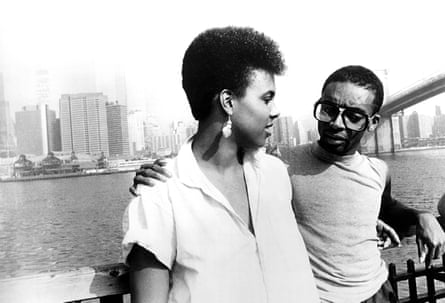
It’s easy to forget just what a struggle they had had. Townsend had to max out credit cards and scavenge leftover film stock to cobble together Hollywood Shuffle. It took Lee four years to raise $175,000 to make She’s Gotta Have It, in a brisk 12 days. Lee even encouraged his crew to save their drinks cans so he could cash them in for recycling. One upshot of these shoestring budgets was that these films became hugely profitable when they broke through. It was arguably that profitability, rather than any cultural mission, that caught Hollywood’s attention.
A big part of the problem, says Julie Dash, was that black cinema’s ascent coincided with Hollywood’s takeover of independent cinema as a whole. “It became a commodity that could be co-opted by the larger industry. We broke through, and once the curators of culture recognised that we were actively making films in our own way, it suddenly just slowed down to a halt. Funding ran out for pretty much everyone.”
Dash’s Daughters of the Dust was one of the unsung highlights of this era. It deals with Dash’s own Gullah community, descended from slaves who settled on the coast of North Carolina, but it does so with a unique sensibility, weaving together three generations of female characters with music, dance, folk storytelling and lyrical imagery. She describes it as “history reframed, reimagined, redefined”.

The movie won widespread acclaim on its release, and played in one movie theatre for 36 weeks, but Dash never made another feature film. “I’d written many, many additional screenplays and pitched ideas and optioned screenplays – all of those wonderful things that one does after making a film that clearly had a wide audience. It didn’t happen for me,” she says. “There’s no reason given, but of course it’s race and gender. Gender plays a huge part in all of this. I did not fit into the mould.”
As the New Yorker pointed out last year, Richard Linklater, who also released his debut, Slacker, in 1991, has gone on to make 15 features to date. “Some of them are excellent,” wrote Richard Brody, “but neither Slacker nor any of the others can hold a candle to the inventiveness of Daughters of the Dust.”
Many other black film-makers fell by the wayside after that initial burst. Wendell Harris’s Sundance-winning Chameleon Street didn’t get a cinema release. Matty Rich made one more movie after Straight Outta Brooklyn, then went into video games. Even those who did graduate into the mainstream found their work compromised. Charles Burnett, for example, followed up To Sleep With Anger with The Glass Shield, a complex drama about a black cop in an institutionally racist LAPD. It was picked up by Harvey Weinstein’s indie-devouring Miramax, which forced Burnett to change the ending and then attempted to market it as another Boyz N the Hood, giving prominence to Ice Cube in the promotional materials even though he was a peripheral character. It didn’t find an audience, and Burnett never worked with Hollywood again.
“That crossover into the mainstream, into an industry of big business and box office and expectations and formulas, reduced their ability to tell black-focused, ‘authentic’ stories,” says Ashley Clark, writer and curator of the BFI’s current Black Star celebration of black cinema in all its forms, which includes many of those 90s classics. (It was a different story in the UK in the 1990s, incidentally. Or rather, a non-story. Just about the only British actor to figure in this era was, believe it or not, Lenny Henry. Disney gave him a three-picture deal in 1991, evidently attempting to position him as a new Eddie Murphy. They paired him with Charles Lane for True Identity, in which Henry played several roles including a white gangster. Its failure nipped both Henry’s and Lane’s Hollywood careers in the bud.)

Directors such as Singleton, Dickerson and Van Peebles also struggled to recapture the energy once they became Hollywood properties. Lee’s career assumed the form of a continual battle. Clark points out that he had a terrible time making Malcolm X, for example. “He had to fight off competition from other studios to do it. Norman Jewison wanted to do it. His studio, Warner Bros, wouldn’t expand the budget, so he had to do a crowdfunding campaign and get people like Prince, Michael Jackson and Oprah Winfrey to fund it.” By the end of the decade, Lee’s crossover audience had waned, even if the quality of his output hadn’t. Films such as Crooklyn and Bamboozled flopped at the box office, and he wound up making journeyman genre fare such as 25th Hour.
But what other options did Lee and co have? “What people don’t realise is, he gets tarred and feathered as this angry, political black man, but he’s an artist, and he’s constantly working,” says Clark. “He works in documentary, he works in commercials, he never stops. And he has to do that. He can’t, like other directors, just go away for eight years and come back and do something when he feels like it.”
By the new millennium, we had collectively fooled ourselves that we no longer needed a black cinema anyway. Washington and Halle Berry had won their Oscars, and nobody seemed to be that bothered that the new face of black cinema was Tyler Perry dressed as a granny. Actually, a lot of people were bothered by Perry – Lee dismissed him as “coonery buffoonery” – but the assumption, particularly outside the African-American community, was that the battles had all been won. The notion was continually reinforced by self-congratulatory white-saviour race movies such as The Help, Freedom Writers, The Soloist and The Blind Side (it’s still going on – see Matthew McConaughey’s latest, The Free State of Jones), or music biopics such as Ray, Dreamgirls and Get On Up, whose content was safely sealed off from the present-day black experience. Ghettoised, you could say.

America’s Obama-era post-racial vision has turned out to be an illusion. The #OscarSoWhite debacle highlighted ongoing discrimination and lack of opportunity within the industry. Outside of cinema, society is beginning to notice how little has changed. Boyz N the Hood began with an epigraph stating: “One out of every 21 black American males will be murdered in their lifetime.” The figure is lower today, but black Americans are still eight times as likely as white ones to be homicide victims. Lee’s Malcolm X began with a videotape of the brutal police beating of Rodney King, which sparked off the 1992 Los Angeles riots. In recent years, we’ve seen a similar succession of police killings of unarmed African-Americans, captured on mobile phones, which have also sparked riots and civil unrest.
A new generation of black film-makers is starting to respond to this reality, down the road those 90s pioneers paved. Witness Ryan Coogler, whose 2013 Sundance-winner, Fruitvale Station, sensitively dramatised the police shooting of Oscar Grant, an unarmed Oakland commuter. To his credit, Sylvester Stallone recruited Coogler to write and direct his latter-day Rocky vehicle Creed, and allowed him to turn what could have been a creaky franchise instalment into a vibrant, nuanced portrait of an unstereotypical African-American (Michael B Jordan) in demographically altered modern-day Philadelphia. Coogler’s next project is Marvel’s Black Panther superhero movie.
Slavery has been put back on the agenda by 12 Years a Slave and Django Unchained, and it’s being kept there by the Roots remake and Nate Parker’s Birth of a Nation (the toast of this year’s Sundance, until its maker’s name was tarnished by past rape allegations). Justin Simien’s Dear White People smartly dissected modern campus politics. Big things are anticipated for Barry Jenkins, whose artful gay black drama Moonlight comes out in the US this month. There’s also (at last) an appreciable British black-cinema contingent feeding into this, both of directors (Steve McQueen, Amma Asante, Noel Clarke) and actors (David Oyelowo, Idris Elba, Gugu Mbatha-Raw, Chiwetel Ejiofor, Naomie Harris). Television is in good shape now, too, what with Donald Glover’s Atlanta, Issa Rae’s Insecure, Marvel’s Luke Cage, Empire, Black-ish.

And a force all of her own is Ava DuVernay, whose Selma arguably made more of an impact for not getting enough Oscar respect than it would have done if it had. DuVernay has since turned out the powerful Netflix documentary 13th (on the incarceration of black men), the TV miniseries Queen Sugar, and her next project, Disney sci-fi A Wrinkle in Time, makes her the first black woman to command a $100m (£81m) budget.
We should be cautious before heralding a class of 2016, however, both in light of what happened last time round, but also because black cinema is a construct, just as “blackness” itself is a construct. The label can be limiting, says Clark. “When a black film-maker makes films about black people, it’s ‘black cinema’ rather than just cinema. You find yourself in that kind of bind, where today something like Moonlight – yes, it’s being talked about in terms of black masculinity and it’s very culturally specific, but at the end of the day, it’s wonderful cinema. I think there’s a misunderstanding that black cinema is in and of itself a genre, when in fact it isn’t.”
The 90s golden age has become a cultural touchstone for the current generation. Ice Cube, for example, who has never been out of work since Boyz N the Hood, found his own life dramatised in last year’s hit NWA biopic Straight Outta Compton. Cube’s Boyz co-star Cuba Gooding Jr, meanwhile, just headed up another 90s-based nostalgia trip: The People Vs OJ Simpson, which won nine Emmys this year. John Singleton has just received the go-ahead for Snowfall, his new series on LA’s 1980s crack cocaine epidemic – almost a prequel to Boyz. And even Spike Lee seems to have got his mojo back. His latest, Chi-Raq, a confrontational take on south Chicago gun violence, has brought him his best reviews in decades, as well as reuniting him with original troupe members such as Angela Bassett, Wesley Snipes and Samuel L Jackson. Of course, he still struggled with the funding – turning to Kickstarter to finance it. But Lee also recently inked a deal with Netflix to produce and direct a comedy-drama series based on She’s Gotta Have It.
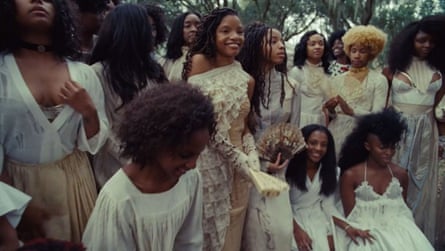
Most heartening of all, perhaps, Julie Dash’s Daughters of the Dust has found a new lease of life. It was selected for preservation by the Library of Congress in 2004, and a restored version is set for release in November, to mark its 25th anniversary. The film was also heavily appropriated by Beyoncé in her lavish “visual album” for Lemonade – which could turn out to be one of the most significant pieces of black cinema of our time. It’s apt that a performer such as Beyoncé, in her newly politicised incarnation, would turn to a movie so concerned with cultural memory and reconnection to African-American history. That history has been reframed, redefined and reimagined once again. Dash herself is delighted. In addition, in the wake of the #OscarSoWhite debacle, Dash was one of the film-makers invited to join the new, more-inclusive Academy. Her original application, 25 years ago, was ignored. “I’m hopeful,” she says. “There are still a lot of people waiting at the gate, but things are moving forward.”
Black Star events are running nationwide until December, bfi.org.uk/black-star.
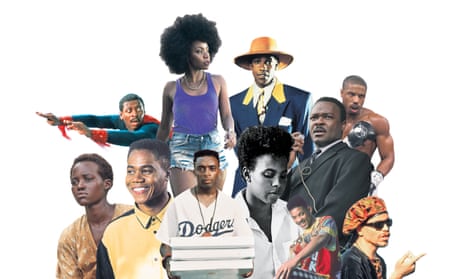


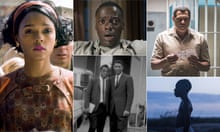
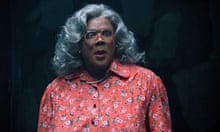
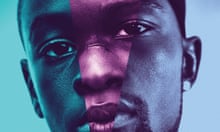




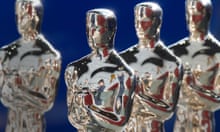
Comments (…)
Sign in or create your Guardian account to join the discussion